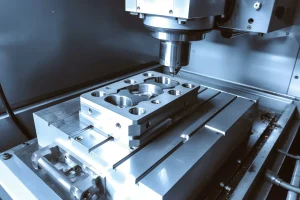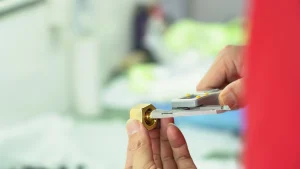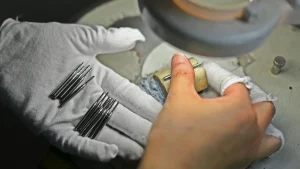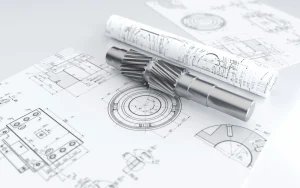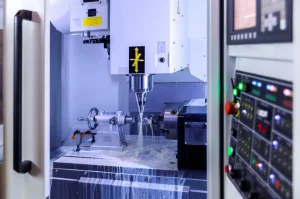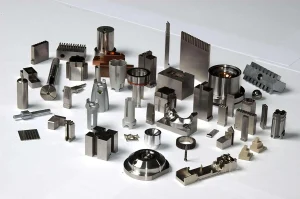I. Introduction
In the dynamic world of manufacturing, wrap molding and insert molding stand as two powerful techniques that have revolutionized the production of a vast array of products. From the sleek exteriors of consumer electronics to the robust components of automotive systems, these molding methods play a pivotal role in creating high-quality, functional, and aesthetically pleasing parts.
Rapidefficient, a leading name in the CNC machining market, has been at the forefront of leveraging these techniques to offer innovative solutions to industries worldwide. With a commitment to precision, speed, and cost-effectiveness, Rapidefficient has harnessed the potential of wrap molding and insert molding to transform design concepts into tangible, top-notch products. In this comprehensive guide, we will delve into the intricacies of these molding processes, explore their design considerations, and showcase how Rapidefficient is making a significant impact. Whether you’re a product designer, engineer, or manufacturing enthusiast, this article will equip you with the knowledge to make informed decisions and unlock new possibilities in your projects.
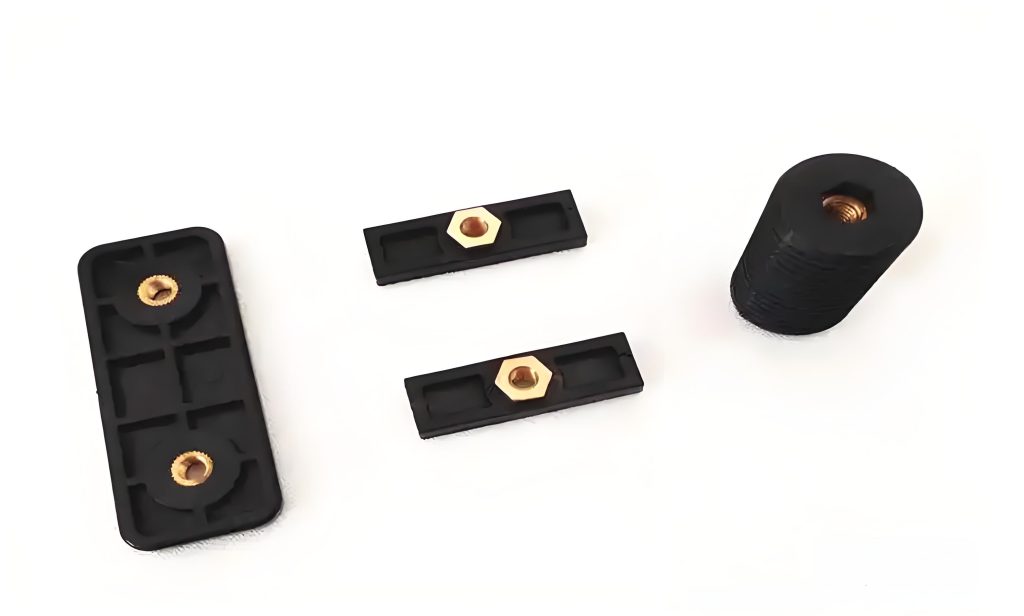
II. Understanding Wrap Molding
A. Definition and Process
Wrap molding, also known as overmolding, is a manufacturing process that involves encapsulating a substrate material with a layer of thermoplastic or elastomeric material. This technique creates a unified, multi-material component with enhanced functionality and aesthetics. The process typically begins with the placement of the substrate, which could be a rigid plastic part, metal insert, or even a fabric layer, into a specialized mold. Subsequently, the molten overmolding material is injected into the mold cavity, precisely enveloping the substrate. As the material cools and solidifies, it forms a seamless bond, integrating the two components. For instance, in the production of power tool handles, a rigid internal core provides structural integrity, while the overmolded thermoplastic rubber offers a comfortable, non-slip grip. The result is a product that combines strength and ergonomics, with a smooth, professional finish.
B. Advantages
One of the most significant benefits of wrap molding is its ability to combine the disparate properties of different materials. By fusing a rigid substrate with a flexible overmold, manufacturers can create products that are both strong and comfortable to use. This is particularly evident in consumer electronics, where the hard casing of a device can be overlaid with a soft-touch material, improving grip and enhancing the overall user experience. Additionally, wrap molding allows for the integration of features such as seals, gaskets, and insulation directly into the product design, reducing assembly time and costs. From a design perspective, it offers endless possibilities for customization, enabling the creation of unique textures, colors, and patterns that can set a product apart in a competitive market. In the automotive industry, for example, overmolded door handles not only provide a better tactile feel but also contribute to the vehicle’s overall aesthetic appeal.
C. Design Considerations
When embarking on a wrap molding project, several key design considerations come into play. Firstly, the choice of substrate material is crucial, as it must provide the necessary mechanical properties and be compatible with the overmolding material. For instance, a metal substrate may offer strength and heat dissipation, but it requires proper surface treatment to ensure adhesion. Secondly, the characteristics of the overmolding material, such as its melt flow index, hardness, and flexibility, need to be carefully selected to achieve the desired functionality and appearance. The mold design itself is also a critical factor, with considerations including gate location, venting, and draft angles to ensure proper material flow and minimize defects. A well-designed mold will promote even distribution of the overmolding material, preventing issues like air entrapment and uneven thickness. Finally, the shrinkage rate of both materials must be taken into account to ensure dimensional accuracy in the final product. By meticulously addressing these design aspects, manufacturers can achieve high-quality, reliable wrap molded components.
III. Exploring Insert Molding
A. What is Insert Molding
Insert molding is a highly versatile manufacturing process that involves integrating pre-formed inserts, typically made of metal, plastic, or other materials, into a plastic molding. This technique allows for the combination of the unique properties of different materials to create a single, cohesive component. During the process, the inserts are first placed into a specialized mold cavity in a precise position. Subsequently, molten plastic is injected into the mold, surrounding and encapsulating the inserts. As the plastic cools and solidifies, it forms a strong bond with the inserts, resulting in a unified product. For example, in the production of electrical connectors, metal terminals are inserted into the mold and then overmolded with plastic, providing both electrical conductivity and insulation in a single part. This process eliminates the need for subsequent assembly steps, reducing production time and potential points of failure.
B. Benefits
The benefits of insert molding are far-reaching and have led to its widespread adoption across numerous industries. Firstly, it significantly enhances the mechanical properties of products. By incorporating metal inserts, for instance, components can achieve greater strength, rigidity, and durability, making them suitable for demanding applications. In the automotive sector, engine components with metal inserts can withstand high temperatures and mechanical stresses. Secondly, insert molding simplifies the assembly process. Instead of separately manufacturing and then assembling multiple parts, this technique combines them in a single molding operation, reducing labor costs and the risk of errors. In consumer electronics, it enables the seamless integration of internal components like circuit boards and connectors. Thirdly, it offers expanded design possibilities. Designers can create complex geometries and multifunctional products that would be difficult or impossible to achieve through traditional manufacturing methods. This has led to innovative product designs in industries such as medical devices, where precision and functionality are paramount. Overall, insert molding contributes to improved product quality, reduced production costs, and faster time-to-market.
C. Design Guidelines
When designing for insert molding, several crucial guidelines must be followed to ensure a successful outcome. The choice of insert material is a fundamental consideration. It should be selected based on the specific requirements of the product, such as strength, conductivity, or chemical resistance. For applications requiring high strength and heat resistance, metals like steel or brass may be appropriate, while for non-conductive and lightweight needs, plastics can be a viable option. The shape and size of the inserts also play a vital role. They should be designed to facilitate easy placement in the mold and ensure proper encapsulation by the plastic. Rounded or chamfered edges are preferred to prevent stress concentrations and ensure uniform material flow. Additionally, the positioning of the inserts within the mold must be precise to achieve the desired functionality and structural integrity. Tolerances need to be carefully controlled to account for any potential shrinkage or movement during the molding process. Finally, the design should take into account the compatibility of the insert and plastic materials in terms of thermal expansion coefficients to minimize the risk of internal stresses and product failure. By adhering to these design guidelines, manufacturers can unlock the full potential of insert molding and produce high-quality, reliable components.
IV. The Value of rapidefficient in CNC Machining Market
A. Precision and Efficiency
In the highly competitive landscape of CNC machining, Rapidefficient has set new benchmarks for precision and efficiency. Leveraging state-of-the-art technology and a team of highly skilled professionals, Rapidefficient achieves remarkable accuracy levels that are essential for modern manufacturing. For instance, in wrap molding applications, the company’s advanced machinery can control the thickness of the overmolded layer with a tolerance of as little as ±0.05mm, ensuring a seamless and consistent finish. In insert molding, the placement of inserts is precise to within ±0.03mm, guaranteeing optimal integration and functionality.
Compared to industry averages, Rapidefficient’s production times are significantly shorter. In a typical wrap molding project for consumer electronics components, while competitors may take up to 48 hours to complete a batch, Rapidefficient can achieve the same quality output in just 36 hours, representing a 25% reduction in production time. This efficiency gain is attributed to optimized machining processes, real-time monitoring, and intelligent production scheduling. The ability to deliver high-quality products quickly not only meets the tight deadlines of today’s markets but also provides a competitive edge to clients.
B. Cost-Effectiveness
Cost is a critical factor in any manufacturing decision, and Rapidefficient excels in providing cost-effective solutions. By optimizing the design and production processes, the company minimizes material waste. In insert molding, for example, through precise insert placement and material flow control, Rapidefficient reduces plastic overuse by up to 15% compared to conventional methods. This not only conserves resources but also directly lowers material costs.
The streamlined production processes also translate to shorter production cycles, reducing labor costs and overheads. A case study in the automotive sector demonstrated that by outsourcing insert molding work to Rapidefficient, a manufacturer was able to cut production costs by 12% in the first year. These savings were achieved through a combination of reduced setup times, fewer rejects, and optimized production runs. Over the long term, such cost efficiencies contribute to enhanced profitability and competitiveness, allowing clients to invest in other areas of their business, such as research and development.
C. Innovation and Adaptability
In the fast-evolving world of manufacturing, staying ahead of the curve requires continuous innovation. Rapidefficient is at the forefront of adopting new technologies and techniques in wrap molding and insert molding. The company invests heavily in research and development, collaborating with industry experts and universities to explore emerging trends. For instance, in response to the growing demand for lightweight yet strong components in the aerospace industry, Rapidefficient has developed novel insert molding processes using advanced composite materials. This innovation enables the production of parts that are up to 30% lighter than traditional metal components while maintaining structural integrity.
Moreover, Rapidefficient’s ability to adapt to diverse customer requirements sets it apart. Whether it’s a small startup with a unique product concept or a large multinational corporation with complex manufacturing needs, the company tailors its solutions accordingly. In the medical device industry, where sterility and precision are paramount, Rapidefficient has designed custom wrap molding processes to create sealed, easy-to-clean enclosures for sensitive equipment. This adaptability ensures that clients can bring their innovative ideas to market quickly and effectively, supported by Rapidefficient’s technical expertise.
V. Case Studies
A. Successful Wrap Molding Projects
One notable example of Rapidefficient’s expertise in wrap molding was a project for a leading electronics manufacturer. The client required a new design for the casing of their portable device that would enhance both its durability and user experience. The challenge was to integrate a rigid internal frame for structural support while overmolding a soft, rubberized material to improve grip and protect against accidental drops.
Rapidefficient’s engineering team meticulously selected a high-strength plastic for the substrate and a thermoplastic elastomer for the overmold. Through advanced mold flow analysis, they optimized the gate location and venting to ensure uniform material distribution. The result was a sleek, ergonomic device casing that not only met the client’s strict durability requirements but also enhanced the overall aesthetic appeal. The overmolded layer provided a comfortable grip, reducing the risk of slippage during use. Additionally, the seamless integration of the two materials eliminated the need for additional assembly steps, saving both time and cost. This project not only satisfied the client’s immediate needs but also contributed to the product’s competitive edge in the market.
B. Outstanding Insert Molding Applications
In the automotive industry, Rapidefficient collaborated with a major manufacturer to produce engine components that required exceptional strength and heat resistance. The components needed to withstand high temperatures and mechanical stresses while maintaining precise dimensions.
Rapidefficient opted for high-performance metal inserts, precisely machined to fit the mold cavity. The inserts were strategically placed to optimize load distribution and functionality. A specialized engineering-grade plastic was selected for the overmolding process, chosen for its compatibility with the metal inserts and its ability to withstand the harsh operating conditions. Through careful control of the molding process parameters, such as temperature, pressure, and injection speed, Rapidefficient achieved a perfect bond between the inserts and the plastic. The final components exhibited outstanding dimensional stability, with tolerances held to within the tightest industry standards. This ensured reliable performance in the demanding automotive environment, reducing the risk of component failure and enhancing overall vehicle safety. The success of this project not only met the immediate needs of the automotive manufacturer but also set a new benchmark for quality in the industry.
VI. How to Choose the Right Service Provider
A. Factors to Consider
When it comes to selecting a CNC aluminum machining service provider, several crucial factors should be taken into account. Firstly, experience matters. A provider with a long track record in the industry is more likely to have encountered and overcome a wide range of manufacturing challenges. They will possess the know-how to handle complex projects and offer practical solutions. For instance, a company that has been in the business for decades will have refined its processes over time, resulting in higher quality and more reliable output.
Secondly, technical capabilities are essential. This includes the range of equipment they possess, such as advanced CNC machines capable of high-precision machining, multi-axis machining centers for complex geometries, and specialized tooling for specific materials. The provider should also have expertise in the latest software for design and simulation, enabling them to optimize production processes and anticipate potential issues before they occur.
The quality control system is another vital aspect. A reliable service provider will have stringent quality checks at every stage of the production process, from raw material inspection to final product testing. This ensures that only products meeting the highest standards are delivered to clients. Look for providers with certifications such as ISO 9001, which attest to their commitment to quality management.
Customer service is also a significant consideration. A responsive and communicative service provider will keep you informed throughout the project, promptly address any concerns or questions, and offer after-sales support. This collaborative approach is crucial for a smooth manufacturing experience, especially when dealing with tight deadlines or last-minute design changes.
Finally, cost and delivery time need to be balanced. While it’s tempting to opt for the lowest price, it’s important to consider the overall value. A provider that offers a slightly higher price but with faster delivery times, better quality, and comprehensive service may ultimately prove to be a more cost-effective choice in the long run.
B. Why rapidefficient Stands Out
Rapidefficient distinguishes itself in the crowded CNC machining market through a combination of outstanding features. With a team of highly trained engineers and technicians, the company brings extensive technical expertise to every project. Their professionals stay updated with the latest industry trends and techniques, ensuring that clients benefit from state-of-the-art solutions.
In terms of equipment, Rapidefficient has made significant investments in advanced CNC machinery. Their machining centers are equipped with high-precision spindles, advanced control systems, and automated tool changers, enabling them to achieve the tightest tolerances and fastest production speeds. This technological edge translates into superior quality products and shorter lead times.
The company’s quality control process is second to none. From the moment raw materials enter the facility, they are subjected to rigorous inspections. Throughout the production process, multiple quality checkpoints are in place, including in-process inspections and final product verification using advanced metrology equipment. This meticulous approach guarantees that every component that leaves the factory meets or exceeds industry standards.
Customer satisfaction is at the heart of Rapidefficient’s business philosophy. The company assigns dedicated project managers to each client, ensuring seamless communication and prompt resolution of any issues. Whether it’s a design modification request or a query about production progress, clients can expect a swift and helpful response. This commitment to service has earned Rapidefficient a stellar reputation and a long list of satisfied customers across various industries. When choosing a CNC aluminum machining service provider, Rapidefficient offers a compelling combination of technical prowess, quality assurance, and customer-centricity that sets it apart from the competition.
VII. Conclusion
In conclusion, wrap molding and insert molding are indispensable techniques in modern manufacturing, offering a plethora of design possibilities and functional enhancements. By understanding the intricacies of these processes, from material selection to mold design, manufacturers can create products that meet the highest standards of quality, performance, and aesthetics.
Rapidefficient emerges as a game-changer in the CNC machining market, with its unwavering commitment to precision, cost-effectiveness, and innovation. Their expertise in wrap molding and insert molding has been proven time and again through successful projects across diverse industries. Whether you’re aiming to launch a new consumer electronics device with a sleek, ergonomic design or produce high-performance automotive components that can withstand extreme conditions, Rapidefficient has the capabilities and experience to bring your vision to life.
As you embark on your next manufacturing project, remember to consider the key design guidelines and factors discussed in this article. Evaluate potential service providers carefully, and don’t hesitate to reach out to Rapidefficient to explore how they can add value to your production process. With the right approach and the right partner, you can unlock the full potential of wrap molding and insert molding, and stay ahead in the competitive world of manufacturing. The future of product design and production is here, and it’s time to embrace these innovative techniques to create the next generation of outstanding products.

